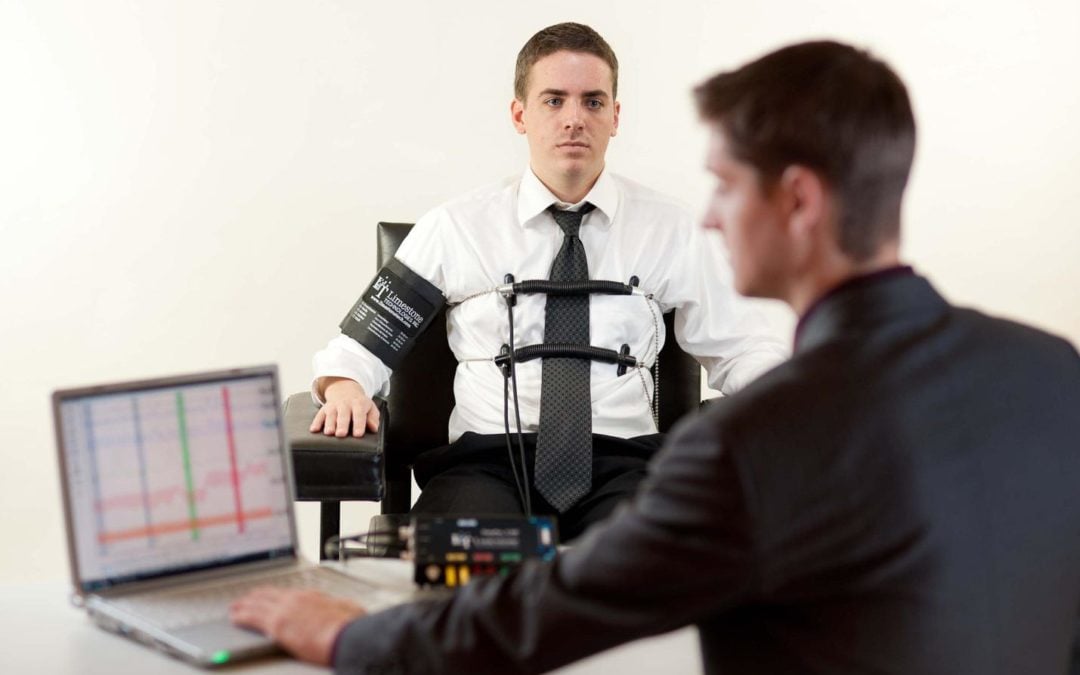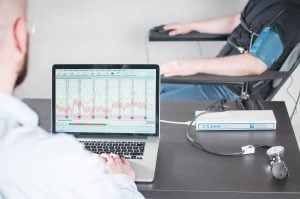So What Exactly is a Polygraph or Lie Detector?
If you watch daytime TV, no doubt you will have come across a show in which the host uses a lie detector to prove or disprove, that one of the guests is lying. It invariably centres on whether someone has cheated, or stolen from a friend or family member, or caused criminal damage – all very dramatic and great for TV ratings.
However, while you will have heard the term lie detector, or polygraph, not everyone actually knows what this entails or even what the equipment looks like. And in the case of the aforementioned show, this is for good reason – it all adds to the air of mystery. This ‘magical’ machine which can get inside the heads of the accused and actually read their minds!
Ah – if only it was so mystical. But, like many things which fascinate us, it is firmly rooted in science.
The Equipment
Polygraph equipment consists of several parts.
- The Pneumograph consists of two rubber tubes which are attached to the subject’s chest and abdomen.
- A Blood Pressure Cuff is placed around the top of the subject’s arm.
- The Galvanometers measure how much the subject is sweating.
The monitor receives all of the physiological markers, which we will go into in more detail in a moment, and records them, either (historically) on a long strip of paper or, much more likely, a computer monitor. The Examiner is the expert who deciphers the results.
What Does the Equipment Do?
When we lie, our bodies react involuntarily. We have no control over our heart rate, for example, and very little control over our respiratory rate in reaction to stress (and lying invariably causes stress – we can’t help it). The equipment mentioned above measures all of these responses and records them.
So let’s look at each of those components in more detail:
The Pneumograph consists of two hollow rubber tubes. The rubber tubes are filled with air and placed around the subject’s abdomen and chest. As the subject breathes, the air in the tubes is displaced, and it is this movement of displaced air which the pneumograph measures. The movement will speed up or slow down, depending on whether the subject is stressed (lying) or relaxed (being truthful).
The Blood Pressure Cuff is very similar to the ones used by Doctors and Nurses in a surgery or hospital setting, although in a polygraph situation it will be slightly less inflated, making it more comfortable. When we are being deceitful, our heart rate increases and this is picked up by the Blood Pressure Cuff – again due to the air displacement in the cuff as each heart beat is ‘heard’, or more accurately ‘felt’ by the cuff.
The Galvanometer is used to measure electoral-dermal activity, or, to put it more simply – sweat. The fingertips are incredibly porous, so this is the perfect spot to look for sweating, which is another involuntary response to lying. Small finger plates are attached to two of the subject’s fingers, and these measure the sweat response – the more sweat that is present on the plate, the better the electricity is conducted.
The Examiner is, without a doubt, the most important ‘piece of equipment’ there is in a polygraph examination. The best, most sophisticated equipment in the world is not going to yield good results without a highly skilled examiner to interpret the responses. He or she will closely watch the responses recorded, as well as the general body language of the subject throughout the examination – collate all of the responses together and, with their extensive knowledge and training, will give an accurate result. A poorly skilled examiner will be able to give no better than a 50% accuracy result – you might as well toss a coin – so ensuring you are getting the most highly trained professionals available will give you the most accurate result possible.
So how are the Results Deciphered?
During a polygraph, or lie detector, test, the subject will be asked several questions. Some of those questions will be ‘routine’, such as “Is your name ………..?” To which the subject will answer truthfully. That will give a base measurement against which to compare the relevant question, such as “did you steal the money from the drawer?” If the subject didn’t steal the money, the reactions recorded will remain steady – however, if the subject did steal the money, and denies it, there will be a marked difference in the reactions recorded on the monitor. You can read more about questioning techniques on our website.
But does it Really Detect Lies?
Strictly speaking – no. Polygraphs cannot read minds. “Lie Detector” is a name given to the test by the media over the years. The word Polygraph, literally translated, means ‘many writings’, and this refers to the older style machines which used to record the changes in physiological responses using a different pen for each bodily function (respiration, heart rate, and sweat). Each pen would move up and down on a long strip of paper, and fluctuate with bigger markings on the paper when lying. However, it wasn’t recording dishonesty, it was recording the movements of the subject – movements which fluctuate when the subject is under stress.
Sceptics will always be quick to point out that anyone undergoing a polygraph examination is going to be nervous, and they would be right. However, as the subject is nervous throughout the test, the differences in responses is still going to occur – they will be more nervous, or stressed, whenever they are lying.
In its simplest form, a polygraph, or lie detector, is a conversation between the subject and the examiner. The only difference between that and a conversation sitting at a bar is that the subject’s responses are being monitored and compared – something which is impossible to do without the use of the equipment.
It’s not painful, it’s not physically uncomfortable, and – as there are only two of you in the room with no one else listening in – it isn’t even really awkward. A professional Polygraph examiner will never be judgemental, so whatever your ‘secret’ is, you will not be made to feel bad about it. Professionals are also bound by a strict code of ethics, and, unless they have your express permission, they will not divulge or discuss your results with anyone else.


